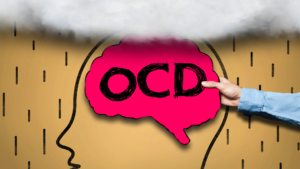
Pain is an unavoidable part of life that affects everyone in some form or another. Understanding the different types of medications available to treat and manage pain can help each one make informed decisions about the best course of action for one’s condition, whether it’s a headache, a broken bone, or something more serious.
People may opt for many different types of treatment when it comes to pain management. Taking pills or medication to alleviate pain is something that some people do as a last resort, as they may not trust the side effects. Some alternative treatments that could work, depending on the specific problem, are exercise, specific diets, visiting a massage therapist, and practicing yoga.
If the pain persists, however, it may be necessary to visit a healthcare professional to get the right treatment and medication. In this blog post, we’ll discuss the different types of medications used to manage pain and how they can be combined to achieve the best results.
Over-the-Counter Pain Medication
There are many different types of over-the-counter pain medication available to manage pain. The most common pain medication type is aspirin, an anti-inflammatory medication.
Other common over-the-counter pain medications include acetaminophen, ibuprofen, and naproxen. These medications work by reducing inflammation or swelling in the body.
Aspirin is the most common over-the-counter pain medication. It is often used to treat headaches, muscle aches, and arthritis pain. Acetaminophen is another common over-the-counter pain medication used to relieve pain from headaches, muscle aches, toothaches, menstrual cramps, and arthritis. Ibuprofen and naproxen are two other types of over-the-counter pain medication that work by reducing inflammation.
These medications are generally safe when taken as directed. Still, it is important to read the label and follow the dosage instructions. If unsure which type of medication to take, speak with a doctor or pharmacist to get advice on what is best for one’s needs.
Prescription Pain Medication
Prescription pain medications are an important part of managing pain. There are different types of prescription pain medications, and it is important to understand the differences.
Opioids are a type of prescription pain medication that can be used to treat moderate to severe pain. Opioids work by binding to opioid receptors in the brain and spinal cord, which reduces the perception of pain. Opioids can be addictive and should only be used as prescribed by a doctor.
Non-steroidal anti-inflammatory drugs (NSAIDs) are another type of prescription pain medication. NSAIDs work by reducing inflammation, which can help to reduce pain. NSAIDs can cause side effects such as stomach upset, so they should be used as prescribed by a doctor.
Acetaminophen is another type of prescription pain medication that can be used to treat mild to moderate pain. Acetaminophen reduces the production of prostaglandins, which are chemicals that contribute to pain and inflammation. Acetaminophen is generally safe when used as directed. Still, it can cause liver damage if taken in large doses or with alcohol.
Prescription cannabis medication is another popular type used to treat various kinds of pain. These medications are prescribed by healthcare professionals for conditions such as chronic pain, neuropathic pain, and certain neurological disorders. If you have a prescription for medical cannabis, you can explore reputable sources such as an online dispensary or a shop nearby to access a variety of cannabis products tailored to your specific medical needs. However, it’s essential to use medical cannabis as directed by your healthcare provider to ensure safe and effective pain management.
Many other prescription pain medications are available, and it is important to talk to a doctor about which one may be right for one’s needs.
Topical Pain Medication
There are a variety of topical pain medications available over-the-counter or by prescription. Topical pain medications are applied directly to the skin. They are often used to treat arthritis, back pain, and muscle pain.
Some common topical pain medications include:
Arthritis creams and gels
These medications can help reduce inflammation and joint pain.
Muscle rubs
These ointments or creams can help soothe muscle aches and pains.
Topical analgesics
These products contain menthol or capsaicin that can temporarily relieve pain.
Before using any topical medication, it’s important to read the label carefully and follow its directions. Some topical medications are unsuitable for broken skin or open wounds. Be sure to talk to a doctor if there are any questions about using a topical pain medication.
Complementary and Alternative Therapies
Many complementary and alternative therapies (CATs) can be used to manage pain. Some CATs, such as acupuncture, have been used for centuries. Others, such as mindfulness-based stress reduction, are more recent. Recently, people have also turned to CBD products as a method for pain alleviation. Similarly, some may source high-quality kratom from a store like My Kratom Club (and similar others) as an alternative to morphine and other opioids.
CATs can be divided into three broad categories:
- Those that work by changing the way the body experiences pain (such as acupuncture or massage);
- Those that work by changing the way the mind experiences pain (such as hypnosis or cognitive behavioral therapy); and
- Those that work by changing how the body responds to pain (such as exercise or biofeedback).
Research on the effectiveness of CATs is ongoing. Still, there is some evidence that certain CATs can be helpful for certain types of pain.
For example, acupuncture is known for its effectiveness in chronic low back pain and headaches. Massage may be helpful for tension headaches and neck pain. And cognitive behavioral therapy is helpful for fibromyalgia.
Before trying any CATs, it is important to speak with a healthcare provider to ensure they are safe and appropriate.
Take the Pain Away with the Right Pain Management Strategy
Managing pain is a complex task that requires a multifaceted approach. Understanding the different types of medications available and how they work is crucial in making informed decisions about taking on a pain management plan.
Consultation with a healthcare professional is important to determine the best treatment plan. Communication, being aware of red flags and warning signs, being mindful of potential risks and side effects, and being patient is important in managing pain.



